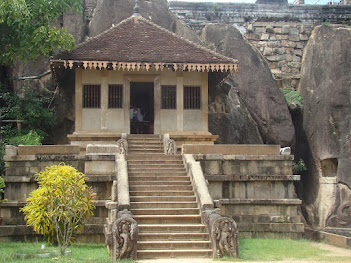Isurumuni Raja Maha Viharaya

The Isurumuniya Viharaya is situated close to the Tisa Wewa. It is renowned for its stone carvings of which the most famous is one known as the “Isurumuniya Lovers”. The other carvings are of the Horseman, Elephant Pond, and the Royal Family. The Temple was originally known as the Meghagiri Vihara and it is believed that the Vessagiri Vihara which is located close to it is the actual Isurumuniya Vihara. The Isurumuniya Viharaya was constructed during the reign of Devanampiya Tissa who governed in Anuradhapura , the country’s capital. During his reign 500, high-caste children were ordained, and Isurumuniya was built as a monastic complex to house all of them. Thereafter it was renovated by King Kasyapa (473 – 491 AD) who renamed it “Boupulvan Kasubgiri Radmaha Vehera” – a combination of his name along with his two daughters. Connected to the Temple is a cave with a cliff above it. A small Dagoba was built on this cliff during a later period. At the picturesque entrance to Is...



